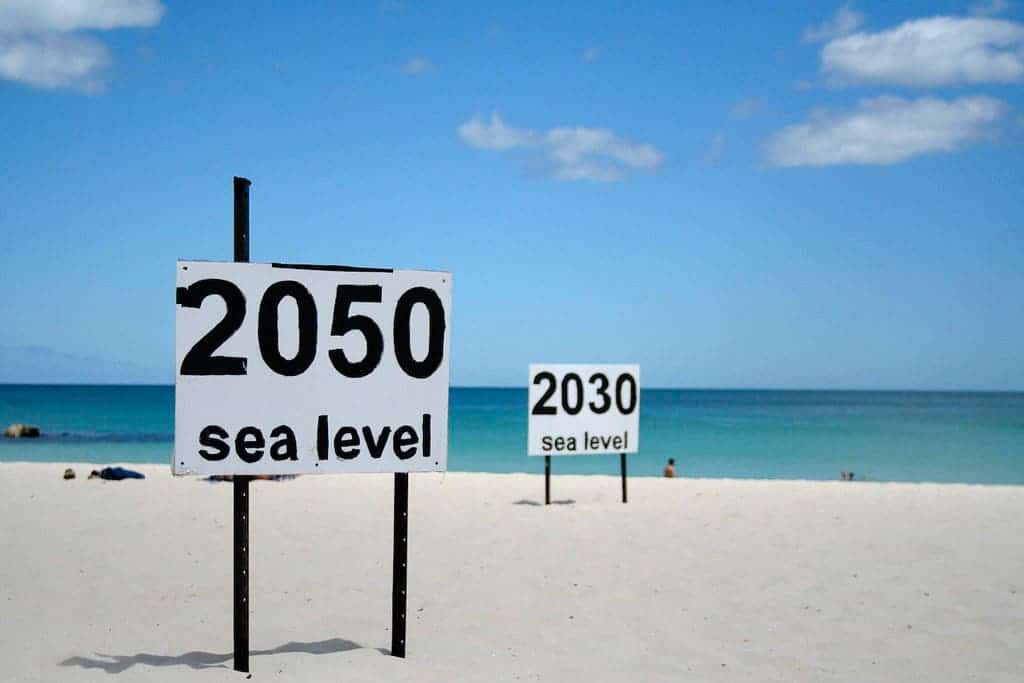Sea level rise is one of the many threats that a warmer planet will cast upon us, and people in many regions of the world are already dealing with this in different ways.
From being displaced from their homes to setting up defenses against the water, coastal communities are adapting in different ways. But this is just the beginning, a new study warns.

A new study by European Commission scientists looked at the costs of protecting coastal communities from climate change — as sea levels are predicted to rise as much as one meter by the end of the century and more intense storms.
More than 200 million European citizens live within 50 km from the coastline, stretching from the Atlantic Ocean and the Baltic Sea to the north and west, and the Mediterranean and the Black Sea in the southern and eastern parts of the continent. Furthermore, current trends indicate that migration toward coastal zones is continuing, and coastal populations are expected to grow in the coming decades, the authors argued.
Global mean sea level has increased by 13–20 cm compared to pre-industrial times, a process has accelerated since the 1990s due to global warming. This has already contributed to coastal recession and made Europe’s coasts more susceptible to coastal hazards such as floods and water surges. A continued sea-level rise could lead to widespread coastal floods in Europe.
Coastal flood losses in Europe now amount to 1.4 billion euros ($1.5 billion) per year and each year about 100,000 EU citizens are affected by coastal flooding. This, the team reports, is just the start. The annual coastal flood losses for Europe by the end of the century are projected to grow to 209.8 billion euros.
Among the many options at our disposal to adapt to this new scenario, the authors focused on building protective structures. Specifically, they explored the costs and benefits of dike improvements along the European coastline, concluding that setting up sea defenses would save money in the long run in the region.
The benefit to cost ratio (BCR) of increased protection, however, varies strongly across Europe, the study found. Costs outweigh the benefits for 76% of the European coastline. Low BCR can be related to several factors, like sparsely populated coastlines, such as in Greece and Malta. Also, long and complex coastlines imply higher dike construction costs, hence lower BCR, such as in many parts of Finland and Sweden.
Benefits tend to outweigh costs in areas where population density is larger than 500 people per km2, the researchers argued. In urbanized areas, the benefits tend to exceed the costs. As a result, when benefits and costs are aggregated at the regional level, the total benefits are dominated by those in urban centers and this compensates for the low BCR in less densely populated and rural coastal stretches.
At the country level, Belgium is the country with the highest percentage of coastline where benefits exceed costs, followed by France and Italy. These are also the countries with some of the highest expected BCRs. On the lower end of the analysis is Malta, for which the expected country-level BCR is the lowest in Europe.
“Our results highlight potential savings in terms of avoided damages that can be obtained through strategies that increase structural flood protection at the subnational scale,” the authors wrote. “Sea levels are projected to increase long after 2100 and very likely this will happen at an accelerating rate.”
For Hannan Cloke, a hydrology professor at Reading University, who did not participate in the study, setting up coastal protection isn’t necessarily the only way of protecting against sea-level rise. Nature-based solutions such as recreating dunes or marshland or retreating from coastal zones should also be considered, she argued.
These solutions work with natural processes and have many other benefits for wildlife and humans, Cloke said, as well as removing some of the worst issues of coastal defenses such as the way concrete walls can simply displace erosion further along the coast to places which are not defended.
“Do we really want to live in a world in which we all live behind huge walls? Is this the only way to adapt? Many of us have trapped ourselves in places that will no longer be safe, and in some places building large defenses is the only option. Certainly, London will not survive without the next-generation Thames barrier,” Cloke wrote.
The study was published in the journal Nature Communications.
Worse than expected
According to recent a global survey with 100 leading experts, oceans are likely to rise as much as 1.3 meters by 2100 if Earth’s surface warms another 3.5 degrees Celsius. By 2300, when ice sheets covering West Antarctica and Greenland will have shed trillions of tonnes in mass, sea levels could go up by more than five meters under that temperature scenario, redrawing the planet’s coastlines, they reported.
The new projections for both the 2100 and 2300 horizons are significantly higher than those from the UN Intergovernmental Panel on Climate Change (IPCC), including a special report on oceans it released in September.
“It is clear now that previous sea-level rise estimates have been too low,” co-author Stefan Rahmstorf, head of Earth system analysis at the Potsdam Institute for Climate Impact Research (PIK), told AFP.
The study was published in the journal Climate Atmospheric Science.






